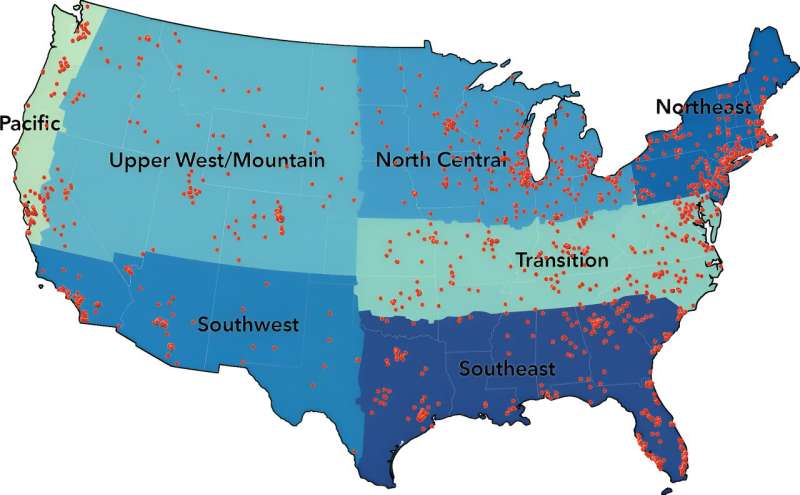This article has been reviewed according to Science X's editorial process and policies. Editors have highlighted the following attributes while ensuring the content's credibility:
fact-checked
peer-reviewed publication
trusted source
proofread
Examining US golf courses' nutrient use and management tactics

Nutrient use on United States golf courses increases management costs and has the potential to influence ecosystems. Therefore, assessing nutrient use and management practices is critical to developing and teaching the best management practices. The objectives of this survey were to measure nutrient use and management practices on United States golf courses in 2021 and to determine if changes occurred since 2006.
A survey was created that allowed responses to be compared across years. Respondents were asked to provide nutrient data according to the guaranteed analysis of the fertilizer label. The instrument was distributed in English via online software (Qualtrics, Provo, UT). A survey link was emailed to golf facilities using the mailing lists of the National Golf Foundation (Jupiter, FL) and the Golf Course Superintendents Association of America (Lawrence, KS), which resulted in the link being sent to 14,033 unique golf facilities.
Additionally, the survey and the link were promoted on social media by Golf Course Superintendents Association of America staff. The survey was available for completion for 7 consecutive weeks beginning on 1 April 2022. Responses were received from 1444 facilities, which represented 10.3% of the known total of United States golf facilities, with a golf facility being defined as having at least one golf course.
From 2006 to 2021, projected tons of nitrogen (N), phosphorus (P2O5), and soluble potash (K2O) applied to United States golf facilities have declined by 41%, 59%, and 54%, respectively. The decline was likely a result of golf facility closures, reduced fertilized acres, and nutrient rate reductions.
Nutrient restrictions likely influenced the amount of P2O5 applied. The percentage of golf facilities that did not apply P2O5 or K2O increased from 2006 to 2021.
Although the percentage of golf facilities that conducted soil tests declined from 2006 to 2021, the application of soil tests continues to be a potential concern because more nutrients were applied to golf facilities that conducted soil tests compared with those that did not.
Although soil testing may be positioned as a conservation practice, the finding that soil testing was associated with increased N, P2O5, and K2O application rates suggests otherwise. Therefore, additional emphasis on the tenets of proper soil testing (i.e., sampling, testing, interpretation, and recommendation) should be provided.
Nearly half of United States golf facilities used the saturated pasted soil extractant for soil phosphorus analysis, which turfgrass soil scientists do not condone. The most important factors used when making nutrient application decisions remained consistent with those of prior years (visual observations, weather, and previous product performance). Golf course superintendents appear to place importance on nutrient management, as evidenced by the reduction in fertilized acres on operational facilities and the reduction of nutrient application rates.
Dr. Shaddox is an Assistant Professor at the University of Kentucky. His research program focuses on soil fertility and turf grass nutrition, with consideration given to reducing costs and environmental risks from the application of granular and foliar nutrients. In addition, Dr. Shaddox continues to develop reliable interpretations of soil and tissue tests for turf grasses.
The study is published in the journal HortTechnology.
More information: Travis W. Shaddox et al, Nutrient Use and Management Practices on United States Golf Courses, HortTechnology (2022). DOI: 10.21273/HORTTECH05118-22
Journal information: HortTechnology
Provided by American Society for Horticultural Science





















